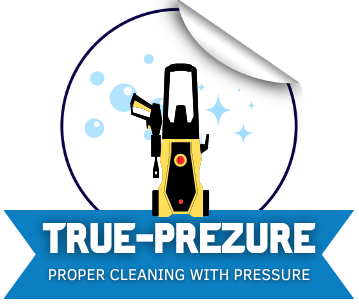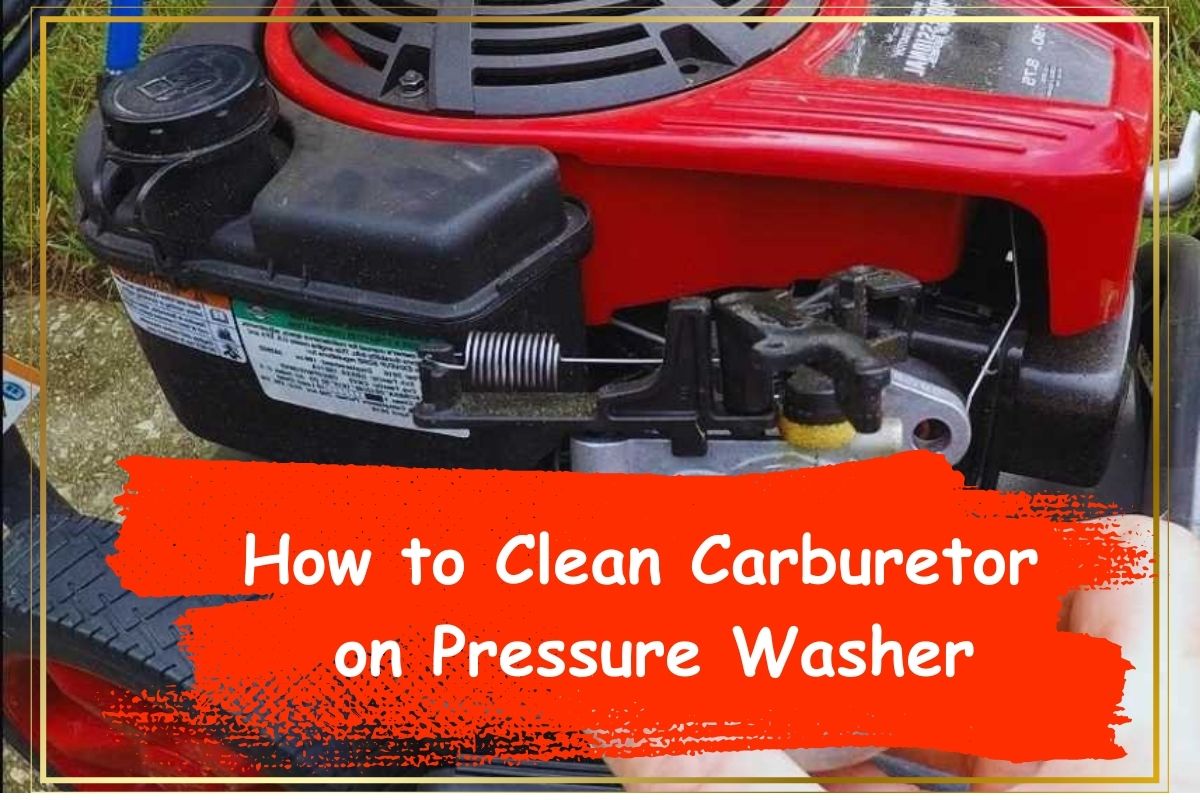Have you ever contemplated the process of cleaning a carburetor on your pressure washer? It’s far less daunting than it may initially sound!
Is your gas-powered pressure washer displaying performance issues once again? If you’ve allowed gas to sit within it for an extended period, there’s a high likelihood that a clogged carburetor is the root cause.
And if time constraints prevent you from visiting a repair shop or if you’re interested in economizing on repair and upkeep expenses, mastering the art of cleaning a carburetor on your pressure washer is an essential skill that you can readily acquire today.
What Does a Carburetor Do?
Before delving into the finer details of carburetor cleaning, it’s crucial to grasp the role the carburetor plays within the framework of your pressure washer.
In order for your gasoline-powered pressure washer to operate effectively, it necessitates an optimal quantity of air to facilitate the proper combustion of fuel. The typical air-to-fuel ratio falls within the range of 12:1 and 15:1. Analogous to our heart’s function, a mechanical device known as a carburetor undertakes this delicate equilibrium. In cases where the carburetor becomes obstructed, it becomes incapable of delivering the precise blend of air and fuel required for optimal performance.
Signs Your Carburetor Needs Cleaning
How can you determine if a clogged carburetor is the culprit? Just as specific indicators aid doctors in diagnosing health concerns, certain signs and symptoms can indicate the presence of a clogged carburetor.
Many issues related to pressure washers failing to start or experiencing difficulty in running can often be attributed to carburetor complications. Consider replacing your carburetor under the following circumstances: if your machine initiates on choke but subsequently stalls, if it starts briefly with the assistance of starting fluid and then ceases running, or if it necessitates the application of choke to remain operational. These instances encompass:
It won’t start.
A clogged carburetor can impede the passage of air and fuel. As a result, your pressure washer may fail to start. However, this issue can stem from various malfunctioning components. Hence, a dirty carburetor MAY be a contributing factor, but it’s not invariably the sole cause for a pressure washer not starting.
It produces sneezing or popping sounds.
When there’s a disparity in the fuel and air mixture, you might notice unsettling sounds. This occurs due to insufficient fuel reaching the carburetor. Additionally, remember to inspect the air filter as well.
It emits black smoke.
Conversely, if there’s an excess of fuel compared to air, this can lead to your engine emitting black smoke from the exhaust.
It leaks.
A blockage within the fuel bowl can hinder the needle valve’s ability to close properly. Consequently, fuel may overflow into the carburetor bowl.
The accompanying image depicts a Craftsman pressure washer carburetor situated on a Craftsman gas-powered pressure washer unit.
What Causes a Clogged or Dirty Carburetor?
While mastering the technique of cleaning your carburetor is significant, it’s equally crucial to comprehend the underlying causes of the issue and how to avert it. After all, prevention consistently trumps the need for a remedy.
To forestall the accumulation of debris in your carburetor, it’s advisable to refrain from allowing fuel to remain stagnant within your pressure washer’s gas tank for prolonged periods. Over time, as certain components of the old fuel evaporate, they leave behind a viscous, adhesive residue.
This tenacious substance is the primary culprit behind clogs and engine complications. In most instances, a thorough cleaning becomes necessary. In more severe scenarios, you might find yourself needing to rebuild or replace the entire carburetor.
Can you use WD 40 to clean a carburetor?
Another frequently asked question revolves around the use of WD-40 as a cleaning solution. You might be curious about the distinctions between these products and how they stack up against each other.
To begin, both of these cleaning agents offer considerable advantages for your pressure washer, yet there exist some differences in their performance as well.
Individuals seeking an alternative that offers comparable efficacy while minimizing residue might be interested in a solution with enhanced potency.
However, if your intention is to cleanse your carburetor without disassembling it, WD-40 can certainly serve the purpose adequately. It also presents the advantage of being a budget-friendly option, which is always appreciated as long as it delivers the expected outcomes!
What can I use to clean a carburetor?
There exists a variety of solutions at your disposal for cleaning a carburetor. Employing a carburetor cleaner spray serves as the primary approach when tackling the task of clearing a clogged carburetor. If you opt for an alcohol-based cleaning agent, such as gasoline or acetone, it’s recommended to immerse the carburetor in the solution for a period before reassembling and restarting the engine.
Additionally, a solvent-based cleaner like CRC carburetor and choke cleaner can also be utilized. Application involves using an aerosol spray to coat the interior of the carburetor, allowing it to soak for approximately 20 minutes before recommencing engine operation.
The most effective approach entails first removing the carburetor, then systematically cleansing it from the inside out by utilizing cleaner spray and a brush for scrubbing.
How to Clean Carburetor on Pressure Washer
To restore your carburetor’s cleanliness and have your pressure washer operating smoothly, follow our step-by-step guide below. This process may span several hours, so ensure you’re adequately prepared. Consult your owner’s manual for more comprehensive instructions, as some manuals might provide detailed sections on this procedure.
Pro tip: Capture images as you progress through each step. These pictures will serve as valuable references for reassembling the components in their proper positions.
Additionally, arrange all disassembled parts in the sequence you removed them. Lay them out meticulously on a towel placed on a level surface. This arrangement simplifies the reassembly process significantly.
Step-by-Step Cleaning to a pressure washer carburetor
Step 1: Begin by removing the spark plug cap and turning off the fuel valve.
Step 2: Locate and access the carburetor. This may involve removing the throttle cover, air filter box, and intake setup to reach the carburetor.
Step 3: Identify the gas line connecting the fuel tank and the carburetor. Disconnect the tube from the carburetor nipple to drain old gas. If you have new gas in the tank, clamp off the fuel line with pliers before detaching the tube. Place a bowl or towel beneath to catch drips. Utilize WD-40 to aid in the rubber tube’s removal.
Step 4: Employ a socket or nut driver to unscrew the two bolts connecting the carburetor to the engine. Remove the carburetor from the engine and disconnect the throttle cable from the carburetor linkage.
Step 5: Drain or remove remaining gas from the carburetor into a container or onto a towel. Inspect the carburetor for dirt or corrosion. If corrosion is present, acquire a replacement. For dirt, proceed with cleaning.
Step 6: Disassemble the carburetor combustion chamber. Unscrew the bolt at the bottom to remove the carb bowl, exposing the float. Disconnect the float from the metal body by removing the pin. Extract the needle valve. Note the material of the needle valve’s tip; if it’s rubber, avoid using carb cleaner. Remove the rubber gasket on the rim where the carb bowl seals into the main body.
Step 7: Apply carburetor cleaner to areas with crystal or gummy residues on metal parts. Wipe dry if material is liquid. Do not use carb cleaner on rubber parts. Inspect and clean main and idle jets with a small wire brush.
Soak the metal parts in carburetor cleaner for an hour if needed.
Step 8: Rinse the parts with water and use compressed air to dry them.
Step 9: Clean the float and gaskets with soap and water, allowing them to dry. Replace warped or torn gaskets.
Step 10: Reassemble carburetor parts in their original positions—needle valve, float, pin, gaskets, and carb bowl.
Step 11: Reattach the carburetor to the engine and ensure all connections are tight and components are in their original places. Refer to pictures taken if needed.
By following this comprehensive step-by-step guide, you can effectively clean your pressure washer’s carburetor. This approach can save you a trip to a repair technician and some money. Remember to empty the fuel tank and lines after each pressure washing task to prevent fuel build-ups. This is also a good opportunity to change the fuel filter and use fresh gas.
How do you clean a carburetor without removing it?
If you’re interested in learning how to clean your carburetor without removing it, we’ll delve into that topic next. Generally, this process entails utilizing a cleaning product and then wiping away any residual buildup using paper towels or rags. However, before exploring these methods, there are a few important considerations to keep in mind.
First, if you intend to clean your carburetor without removing it from the engine, we advise against using a solvent-based cleaner. Such cleaners could potentially dissolve gaskets or seals situated on the sides of your valve cover and between different parts. If there are no adjacent valves or fittings, using a solvent-based cleaner should pose no issues.
Second, when performing carburetor cleaning without removal, you’ll require a tool that’s sufficiently thin to navigate tight corners. This typically involves using an implement like a toothbrush or similar-shaped device.
Third, if you’re opting for WD-40 to clean the carburetor, exercise caution, as this is a solvent that can dissolve gaskets or seals on the sides of your valve cover.
As evident, there exist several approaches to cleaning a carburetor without extracting it from the engine. The foremost option we recommend involves using an appropriate solvent-based cleaner.
While this option necessitates some preliminary preparation, the advantage lies in not needing to disassemble any fittings or valves to execute the cleaning process.
However, it’s worth noting that these cleaners are generally pricier than certain alternatives and might be challenging to locate depending on your geographical location.
FAQ 1: Can I use water to clean my carburetor?
Answer: No, water should not be used to clean your carburetor as it can cause damage and rust. It’s best to use appropriate carburetor cleaners or solvents.
FAQ 2: How often should I clean my pressure washer’s carburetor?
Answer: The frequency of carburetor cleaning depends on usage and maintenance. Generally, it’s recommended to inspect and clean the carburetor at least once a season or if you notice performance issues.
FAQ 3: Can I clean my carburetor without removing it?
Answer: Yes, you can clean the carburetor without removing it, but you need to be cautious. Solvent-based cleaners might damage gaskets and seals. It’s advisable to use a proper cleaning product and avoid using water.
FAQ 4: Is WD-40 a suitable carburetor cleaner?
Answer: WD-40 is not recommended as a carburetor cleaner due to its solvent properties that can harm gaskets and seals. It’s better to use carburetor-specific cleaners designed for this purpose.

